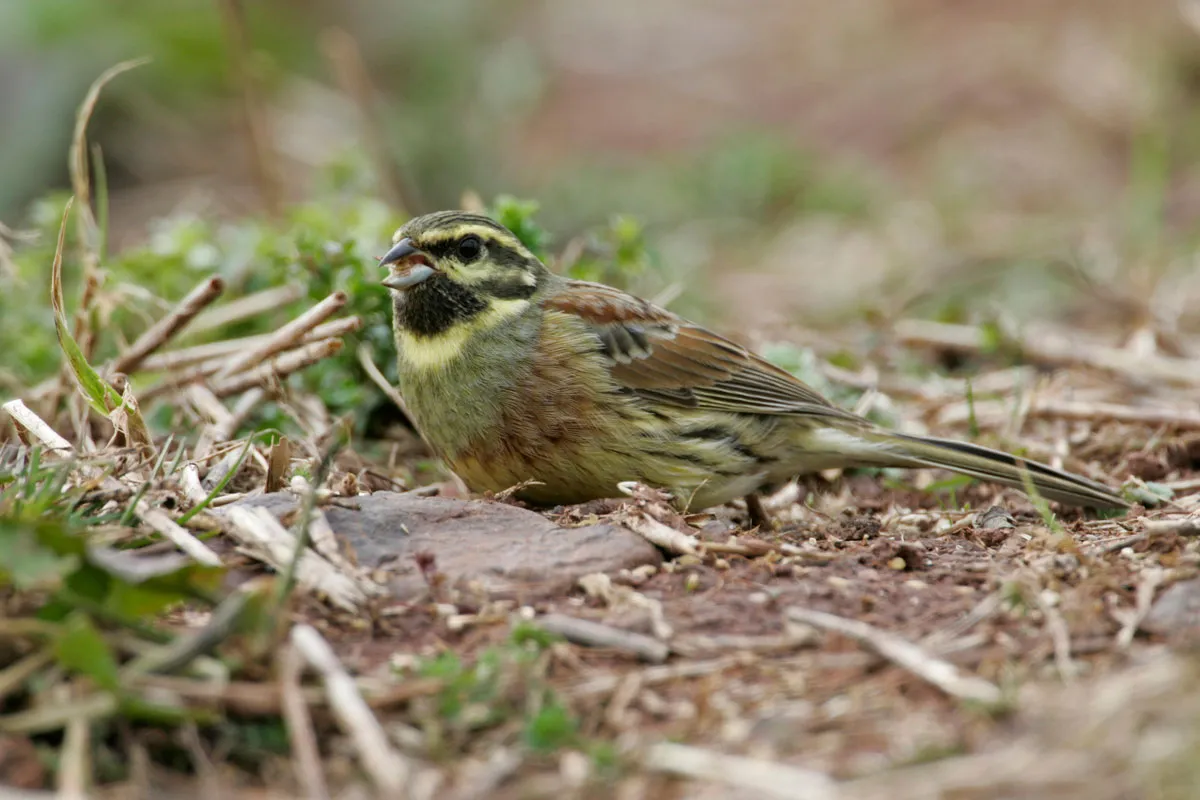Just 25 years ago, there were less than 100 pairs of cirl bunting left in Britain, after intensive farming methods and a loss of habitat and food sources saw numbers dwindle.
Now following a 25-year recovery plan, there has been as eight-fold increase in numbers, with 1078 pairs recorded in 2016.
According to the State of Nature 2016 report, the number of farmland birds in the UK has declined by 54 per cent since 1970. Although the rate has slowed in recent years the declines continues, with 12 of the 26 farmland breeding birds red listed as birds of conservation concern in the UK.
Led by the RSPB, the Cirl Bunting Recovery Programme encourages farmers in South West England to take up Countryside Stewardship Schemes - a government programme which allows farmers to earn payments for making nature friendly choices - to manage their land for cirl buntings and other wildlife.
These conservation options include; growing spring barley that after harvest is left as weedy stubble to provide seed food during the colder months and planting margins of grassland at the edge of their arable fields, which provides insects and spiders for summer food.
Martin Harper, RSPB Conservation Director, said: “The recovery of this charming little bird is a remarkable conservation success and shows what can be achieved when farmers, conservationists and nature work together. To go from being on the brink of extinction to have over a thousand pairs in just 25 years – bucking the overall downward trend for most farmland birds – highlights how effective this project has been.
“It is down to the care and hard work farmers in Devon and Cornwall have put in on their land using the tailored schemes that has made this remarkable comeback possible. The success is one of the best examples of how conservation groups and farmers can work together to achieve amazing results for wildlife. Without this action the cirl bunting would have almost certainly disappeared from our shores altogether.”
The majority of the cirl bunting population remains confined to Devon, although it is hoped that numbers of the small sparrow-sized bird, best found in fields and hedges, will continue to grow and colonies will spread into other parts of southern England.
The first successful reintroduction programme of a small bird in Europe means a thriving cirl bunting population can now be found in Cornwall – 65 pairs according to the latest RSPB survey.
It is thought that a wide variety of farmland wildlife will have benefitted from the effects of the project, with birds such as linnets, skylarks and yellowhammer thriving from a boost in stubble winter food sources. Species such as brown hares, greater and lesser horseshow bats and rare arable plants have also been seen more frequently in fields.

Mel Squires, South West Regional Director at the NFU, said: “Success for the cirl bunting has not been through chance but a true, committed partnership for 25 years between conservationists and farmers working together. It has been a relentless focus on delivering a combined objective where all have wanted the same outcome – a positive and resilient future for this fantastic bird – and a great example of making conservation work in tandem with a modern farming setting.”
To find out more about the cirl bunting conservation project, please visit: www.rspb.org.uk/cirlbuntingstory
Images: Andy Hay for the RSPB
